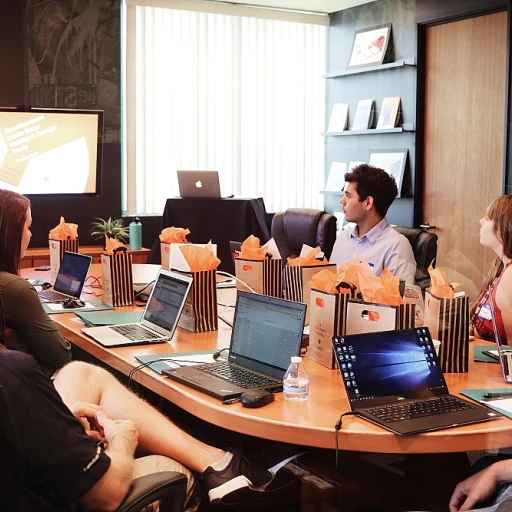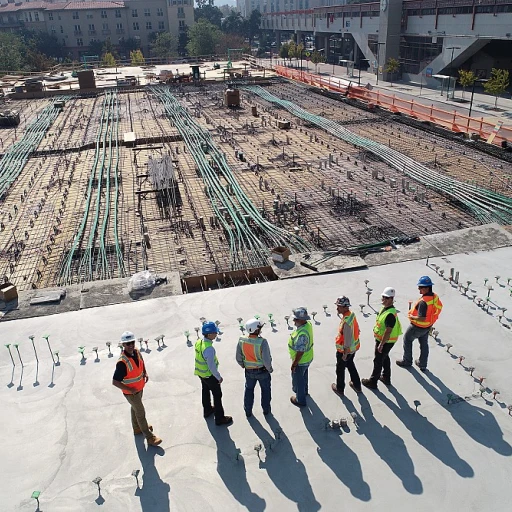
Understanding the Role of VR in Education
VR as a Catalyst for Transformative Learning
Virtual reality (VR) is increasingly becoming a cornerstone in modern education and training, offering students and learners a revolutionary way to engage with content. Unlike traditional teaching methods, VR provides an immersive and interactive environment that captures the attention and imagination of learners. This not only enhances their educational experiences but also elevates the overall learning outcomes.Immersive Classrooms and Beyond
Through VR, educational institutions can create virtual environments where traditional classroom boundaries are transcended. Students can, for instance, embark on virtual field trips to places like the solar system without ever leaving the classroom. This meta experience not only makes learning more engaging but also ensures that complex educational content can be explored in an accessible and engaging way.Platforms and Tools for VR Integration
Numerous VR platforms, such as ClassVR, Meta Horizon, and the Oculus Quest, are readily available, each offering unique features for educational settings. These platforms provide schools with the tools to implement immersive learning modules effectively. From educational apps to free trial opportunities, these platforms ensure that educators have access to high-quality resources tailored for educational purposes. Beyond these tools, schools can enhance classroom dynamics by incorporating VR content in subjects like science and history, effectively transforming mundane lessons into unforgettable experiences. VR headsets and tools like HTC Vive also support augmented reality capabilities, offering a mixed reality approach that blends digital and physical learning landscapes.Impact and Challenges
The shift toward VR in classrooms is not without its challenges. One such challenge is ensuring equitable access to headsets and digital resources, which can be costly. However, the potential of immersing students in virtual education experiences remains vast, pushing schools to continually explore innovative methods to overcome these hurdles. For those interested in learning more about the intersection of technology and education, exploring how companies leverage simulated environments for innovative educational purposes can provide deeper insights into the transformative power of VR.Benefits of VR for Upskilling
The Advantages of Virtual Reality in Skills Development
Virtual reality (VR) is not just a cutting-edge technology reserved for gaming; it has increasingly found its footing in the educational sector. As schools and educational institutions explore virtual realities, the immersive nature of VR is seen as a powerful tool for upskilling both students and professionals alike. One of the main benefits of incorporating VR into learning experiences is the ability to create a truly immersive environment. This immersion allows learners to engage deeply with the educational content in a way that traditional classroom settings may not offer. The Meta Quest and Oculus Quest platforms, among others, provide immersive learning environments that foster engagement and retention. Imagine a solar system tour fully realized, where students can explore celestial bodies as though they're right there in space, enhancing both understanding and memory retention. VR also opens up opportunities for educational apps that simulate field trips or complicated scenarios. For example, in scenarios that may be too costly, dangerous, or impractical to recreate in real life, such as medical training, VR offers a safe yet realistic space for practice. Institutions like ClassVR offer a range of educational experiences that can be tailored to various subject matter, from history to science, making learning not just educational, but also engaging. In addition, the potential for personalized learning in VR cannot be overstated. Educational games and apps available on platforms like HTC Vive and Meta Horizon enable students to learn at their own pace, providing immediate feedback and adjusting to individual learning styles. This personalized approach can be particularly effective in mastering new skills. The accessibility of VR is continually evolving, with headsets becoming more affordable and the availability of free trials for certain VR platforms. This democratization of technology fosters inclusive education, allowing more students and educators to harness these powerful tools. The benefits of integrating VR into education are clear, but the implementation does come with its challenges, which need careful consideration for successful application. For further exploration into how virtual reality is reshaping education and skill enhancement, you can check this new frontier in education.Top VR Platforms for Educational Purposes
Leading VR Platforms Paving the Way for Education
In the evolving landscape of educational technology, selecting the right virtual reality platforms can provide immersive and interactive learning experiences that transform conventional teaching methods into modern interactive experiences. With several groundbreaking platforms available on the market, educators and schools are continually exploring diverse tools to enhance teaching methodologies.
One notable platform is the Oculus Quest, renowned for its ability to transport students into a virtual environment that renders lessons visually compelling, such as taking students on virtual field trips across the solar system. Its content library offers a wealth of educational apps and immersive learning modules suitable for various disciplines.
For those looking to harness the best of augmented reality and virtual reality education, the ClassVR delivers a mixed-reality experience that is especially valuable in classroom settings. With dedicated educational games and a broad spectrum of curricular-aligned content, students can engage in an immersive educational journey that elevates the learning experience.
The versatility of the HTC Vive should also be noted, providing a rich meta experience with its wide-ranging capabilities tailored for comprehensive immersive learning. This headset supports immersive educational apps that span subjects like history, science, and art, offering students a diverse array of learning opportunities.
Platforms like Meta Horizon bring education into the metaverse, enabling students to connect in a shared virtual space that encourages collaboration and creative exploration. These innovative tools offer free trials, allowing educators to experience firsthand the potential of these systems for reshaping reality education in modern settings.
The aforementioned platforms are at the forefront of mastering the AI pipeline workflow for upskilling, providing ample opportunities to redefine educational environments with advanced technologies.
Challenges in Implementing VR for Education
Overcoming Hurdles in VR-based Education
Implementing virtual reality in education comes with its set of challenges, particularly when trying to create immersive experiences for students. Schools keen on harnessing this potential must navigate several hurdles to make the learning process impactful. First, cost is a significant barrier. Acquiring the necessary VR tools such as Oculus Quest, HTC Vive, or other headsets can be expensive for schools. Even though some platforms offer a free trial, the overall investment remains high, affecting the accessibility of VR in traditional classroom settings. In addition to costs, there's the challenge of technical complexity. Educational content designed for a virtual environment must be meticulously developed to meet curriculum standards. Ensuring that students have a smooth and effective learning experience demands advanced technology and skilled professionals to create and maintain this technology. Another issue to consider is the content itself. While there are many platforms with free educational apps and educational games available, the breadth of content can be limited. Schools have to ensure that the VR content aligns with learning objectives and augments reality education properly. Teachers must be trained to facilitate lessons within virtual and mixed reality landscapes effectively. There's also the consideration of physical space for VR setups. Schools need enough room for students to interact safely when using headsets for immersive learning. This requirement can often be a logistical challenge, particularly in schools with limited infrastructure. Moreover, the potential for technical difficulties, such as software glitches or hardware issues, is inevitable. Educational institutions must be prepared for these occurrences with adequate technical support. Despite these challenges, the successful integration of VR in the classroom can transform traditional education into a dynamic learning experience. By persevering through initial barriers, educators can provide enriching virtual field trips or delve into the solar system through innovative meta horizon platforms, ultimately enhancing students' learning experiences.Case Studies: Successful VR Integration in Education
Successful Implementations in Schools
Experiencing virtual reality within the educational environment has become increasingly beneficial for both students and educators. Several schools are integrating VR tools to facilitate immersive learning experiences. For instance, using platforms like Oculus Quest and Meta Horizon, students can explore virtual environments that enhance understanding and retention of complex subjects.
A remarkable case is a school utilizing VR to provide students with virtual field trips that are not only free but also rich in educational content. These experiences enable learners to visit places like the solar system or explore historical sites without leaving the classroom. The use of VR headsets in education transforms traditional learning methods by making them more interactive and engaging.
Innovative Educational Programs
Incorporating VR in education extends beyond just virtual field trips. Some institutions have integrated educational apps designed for platforms like HTC Vive into their curriculum. These apps not only offer varied educational experiences but also allow students to partake in interactive educational games that significantly bolster their learning abilities.
Tools like ClassVR are also being effectively used to provide stroke width precision training in art classes or simulate complex scientific experiments safely. These virtual reality educational platforms provide a meta layer of additional engagement, ensuring that learning is not just confined to reading textbooks or traditional lecturing.
Meta Platforms and Free Trials
Another successful implementation involves offering free trials of VR content to educational institutions. This allows schools to gauge the effectiveness and engagement of VR learning experiences before committing to long-term utilization. Platforms like Meta Quest provide access to a plethora of free trial experiences, aiding schools in building an immersive curriculum without immediate significant financial investments.
While these programs rely heavily on technology, they also highlight the importance of well-structured content that aligns with educational goals. The potential of VR in providing meta learning experiences is immense, fostering an environment where students can freely explore subjects with guided instruction.
Future Trends in VR and Upskilling
Emerging Trends in Virtual Reality Education
The landscape of virtual reality in education is rapidly evolving, with several trends poised to redefine how students engage with learning experiences. As educational institutions continue to explore the potential of VR, these trends are shaping the future of immersive learning.
Integration of Augmented and Mixed Reality
While virtual reality offers a fully immersive experience, the integration of augmented reality (AR) and mixed reality (MR) is gaining traction. These technologies allow students to interact with both virtual and real-world elements, enhancing the educational content they encounter. Schools are increasingly adopting AR and MR to provide a more comprehensive reality education experience.
Advancements in VR Hardware
As VR technology advances, headsets are becoming more accessible and affordable. Devices like the Oculus Quest and HTC Vive are leading the charge, offering powerful platforms for educational purposes. These headsets are not only improving in terms of performance but are also becoming more comfortable and user-friendly, making them suitable for prolonged use in classrooms.
Expansion of Educational Content
The availability of diverse educational content is crucial for the success of VR in education. Developers are creating a wide range of educational apps and experiences, from virtual field trips to interactive educational games. Platforms like Meta Horizon are expanding their offerings, providing teachers with a rich repository of resources to enhance their curriculum.
Focus on Free and Accessible Learning
To ensure that VR education is inclusive, there is a growing emphasis on providing free trials and open-access content. This approach allows schools to experiment with VR without significant financial investment, making it easier to integrate into various educational settings.
Collaborative Virtual Environments
Collaboration is a key component of effective learning. Virtual environments are being designed to facilitate group interactions, enabling students to work together in immersive settings. This trend is particularly beneficial for subjects that require teamwork and problem-solving skills.
Personalized Learning Experiences
VR technology is increasingly being used to tailor learning experiences to individual student needs. By analyzing user data, VR platforms can adapt content to suit different learning styles and paces, providing a more personalized educational journey.
As these trends continue to develop, the potential for VR to transform education and upskilling is immense. By embracing these innovations, educators can create dynamic and engaging learning environments that prepare students for the future.












